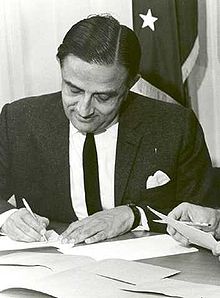Vikram Sarabhi

Dr. Vikram A. Sarabhai, was Chairman of the Indian Space Research Organization (ISRO) and head of India’s Department of Atomic Energy
Baba was not meeting the public in Bangalore, but at 3:30 P.M. on Sunday, 12 November 1939, he made an exception. He granted a few minutes of darshan to three accomplished young men: a Western author and art critic named Francis Watson, 32; an Indian science student, Vikram Sarabhai, 20, who was studying at Cambridge; and another Indian, Kittu Purna, a former student at Oxford. Baba told them to come back after a month, when he would answer any questions they had.
Refr: Lord Meher Online Edition Page 2047 year 1939

Vikram Sarabhai – The Visionary Pioneer of India’s Space Program
Vikram Ambalal Sarabhai (1919–1971) was a pioneering Indian physicist, astronomer, and institution builder, best known as the father of the Indian space program. His visionary leadership laid the foundation for India’s remarkable advancements in space exploration and technology.
Early Life and Education
Born on August 12, 1919, in Ahmedabad, Gujarat, into a wealthy and influential Śvetāmbara Jain family, Sarabhai was the son of Ambalal Sarabhai, an industrialist deeply involved in India’s independence movement, and Sarla Devi. Growing up in an intellectually stimulating environment, he attended a Montessori school established by his parents before pursuing higher studies at Gujarat College in Ahmedabad.
Sarabhai moved to England and joined St. John’s College, University of Cambridge, where he earned a Tripos in Natural Sciences in 1939. With the outbreak of World War II, he returned to India and began research in cosmic rays under the guidance of Nobel laureate Sir C.V. Raman at the Indian Institute of Science, Bangalore. After the war, Sarabhai resumed his studies at Cambridge and completed his Ph.D. in 1947, focusing on cosmic ray investigations in tropical latitudes.
Contributions to Science and Institution Building
 In 1947, Sarabhai established the Physical Research Laboratory (PRL) in Ahmedabad, which became a cradle for Indian space science. Funded initially by the Karmkshetra Educational Foundation and the Ahmedabad Education Society, PRL was spearheaded by renowned scientist K.R. Ramanathan as its first Director.
In 1947, Sarabhai established the Physical Research Laboratory (PRL) in Ahmedabad, which became a cradle for Indian space science. Funded initially by the Karmkshetra Educational Foundation and the Ahmedabad Education Society, PRL was spearheaded by renowned scientist K.R. Ramanathan as its first Director.
Sarabhai’s ability to conceptualize and implement large-scale scientific programs led to the establishment of several key institutions, including:
Sarabhai’s Legacy in Space Research
Sarabhai’s most significant contribution was his vision for India’s space program. He founded the Indian National Committee for Space Research (INCOSPAR) in 1962, which evolved into the Indian Space Research Organisation (ISRO) in 1969. Recognizing the practical benefits of space technology for a developing nation, he stated: “We do not have the fantasy of competing with the economically advanced nations in the exploration of the Moon or the planets… but we are convinced that if we are to play a meaningful role nationally and in the community of nations, we must be second to none in the application of advanced technologies to the real problems of man and society.”
Under his leadership:
Leadership in Atomic Energy
Sarabhai also chaired the Atomic Energy Commission of India from 1966 until his untimely death in 1971. During this period, he oversaw the establishment of the Fast Breeder Test Reactor (FBTR) in Kalpakkam and the Variable Energy Cyclotron Project in Calcutta, advancing India’s nuclear research capabilities.
Awards and Recognition
Sarabhai’s contributions to science and technology were widely recognized:
Personal Life and Legacy
Sarabhai was married to renowned classical dancer Mrinalini Sarabhai, and the couple had two children, Kartikeya and Mallika, both of whom have made significant contributions in their fields. Sarabhai passed away on December 30, 1971, in Thiruvananthapuram, Kerala.
To honor his legacy, the Vikram Sarabhai Space Centre (VSSC) in Thiruvananthapuram and numerous other institutions bear his name. His vision continues to guide India’s strides in science and technology, making him an enduring inspiration for generations.
A Tribute to an Icon
Vikram Sarabhai was not just a scientist but a visionary who foresaw the role of science and technology in nation-building. His contributions have left an indelible mark on India’s scientific landscape, ensuring that the nation remains a key player in global space exploration.
References:
- Vikram Sarabhai – Wikipedia
- Vikram Sarabhai | Biography & Facts – Britannica
- Dr. Vikram Ambalal Sarabhai (1963-1971) – ISRO
- Dr. Vikram Ambalal Sarabhai – NRSC
- Vikram Sarabhai (1919-1971): Architect of Indian space programme – The Hindu
- Brief History – Physical Research Laboratory
- Vikram Sarabhai – IIG
- Vikram Ambalal Sarabhai – New Mexico Museum of Space History
- Dr. Vikram Sarabhai’s 100th Birth Anniversary – IISc
- Vikram Sarabhai – Penguin Random House India
- Vikram Sarabhai – Father of the Indian Space Program – Vajiram & Ravi
- Vikram Sarabhai Biography – Education, Achievements and Contributions – Vedantu
- Remembering Vikram Sarabhai: The father of Indian Space Programme – India Science and Technology
- Dr. Vikram Sarabhai | Department Of Space | Government Of India
- Notes on Achievements of Vikram Sarabhai – Unacademy

Please feel free to contact us for any corrections/omissions

